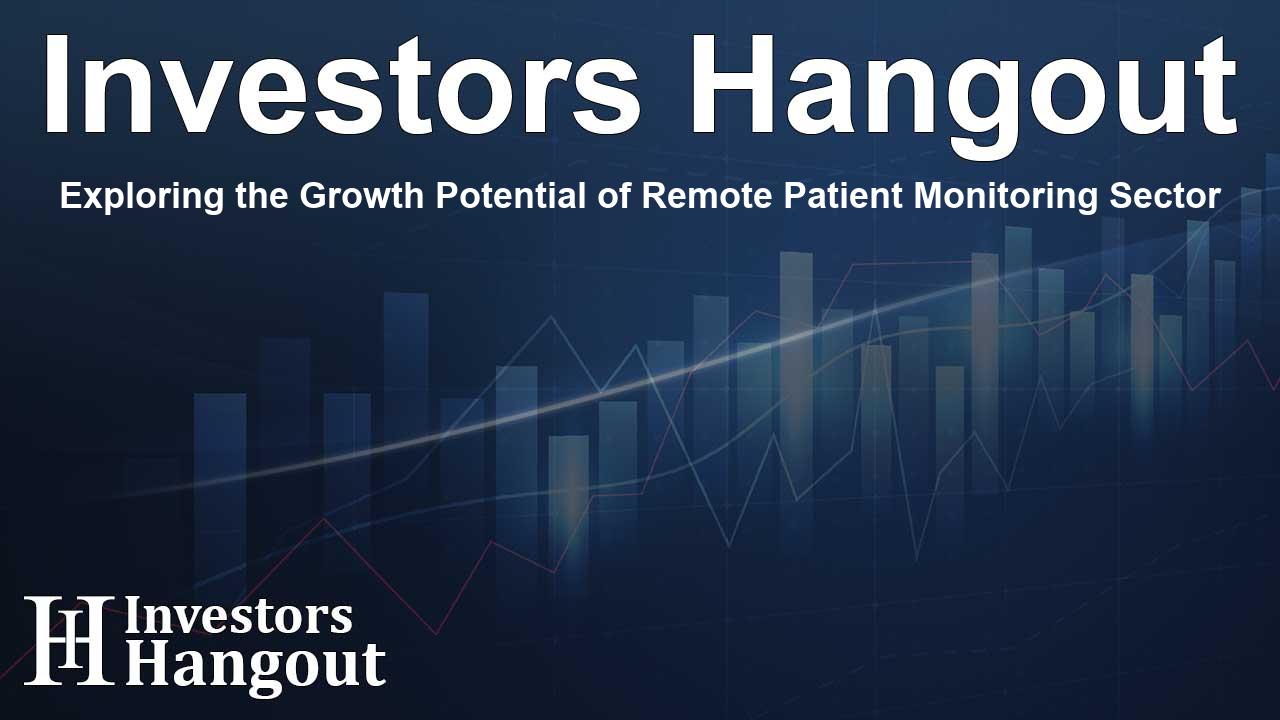Exploring the Growth Potential of Remote Patient Monitoring Sector

Remote Patient Monitoring Set for Dynamic Growth
The increasing prevalence of chronic conditions worldwide is expected to significantly accelerate the growth of the remote patient monitoring (RPM) market. As conditions like hypertension, diabetes, and cardiovascular diseases become more common, coupled with an aging population, healthcare systems face immense pressure to deliver ongoing, long-term care effectively and efficiently.
Market Overview and Projections
The global remote patient monitoring market is poised for tremendous growth and is projected to expand at a compound annual growth rate (CAGR) of 19.0% between 2025 and 2032. With an estimated value of USD 28.92 billion in 2024, the market is anticipated to reach an impressive USD 116.29 billion by the early 2030s. Driving this growth are factors such as the increasing burden of chronic illnesses driven by lifestyle changes and the rising demand for home-based monitoring solutions.
Enhancements in Patient Care Through Technology
Remote patient monitoring facilitates real-time health metrics collection, which is crucial for managing diseases such as chronic obstructive pulmonary disease (COPD), diabetes, and cancer. These technologies bridge the gap between patients and healthcare providers, ensuring timely interventions and better management of various health conditions.
As part of enhancing healthcare experiences, artificial intelligence (AI) is increasingly incorporated into RPM systems. This integration allows for the analysis of large volumes of health data, helping predict potential health issues while providing actionable insights. Such advancements pave the way for proactive healthcare management, substantially improving patient health outcomes.
Key Drivers Fueling the Remote Monitoring Market
The remote patient monitoring market benefits from several crucial growth drivers:
- Implementation of next-generation sensor technologies that enhance data sharing between patients and healthcare professionals.
- Growing incidence of chronic conditions necessitating continuous health monitoring solutions.
- Integration of AI technologies that streamline patient data analysis, thereby facilitating personalized care approaches.
Recent Partnerships and Innovations
Recent developments within the RPM sector showcase significant partnerships and innovations. In April 2025, Tenovi collaborated with Validic to develop RPM solutions that do not rely on Wi-Fi or smartphones, enhancing data sharing capabilities. Furthermore, the partnership between Tenovi and Circadian Health aims to improve chronic disease management through seamless data exchange, crucial for delivering timely interventions.
Additionally, Validic's launch of a generative AI-enabled RPM solution represents a major leap forward. This solution aims to alleviate data overload for healthcare professionals, enabling faster decision-making and enhancing patient care through streamlined methodologies.
Competitive Landscape Analysis
The competitive landscape of the remote patient monitoring market is vibrant, with established medical device firms and innovative startups leading the charge. Notable players include Medtronic, Philips, ResMed, and GE Healthcare, who integrate AI and wearable technology into their solutions to enhance patient experiences. For instance, Philips introduced an AI-enabled cardiovascular ultrasound platform in mid-2024 to improve cardiac care delivery, highlighting the focus on technological advancements in this sector.
Segmental Breakdown of the Remote Patient Monitoring Market
The remote patient monitoring market is segmented across various parameters:
- By component: Devices play a vital role in gathering real-time health data.
- By indication: Cardiology leads the segment, emphasizing the need for continuous monitoring in managing cardiovascular diseases.
- By end-user: Healthcare providers utilize RPM solutions primarily for patient management and outcome improvements.
Regional Insights into Market Growth
- North America: The region leads the market due to advanced healthcare infrastructures and a high rate of digital health technology adoption.
- Asia Pacific: This region marks the fastest growth, influenced by rising healthcare awareness and increasing chronic disease prevalence.
- Europe: The steady growth in this region is supported by the digitalization of healthcare services.
- LAMEA: Gradual growth is observed here, driven by improving healthcare access and mobile health technologies.
Challenges in the Remote Patient Monitoring Sector
Despite its promising growth prospects, the RPM market faces challenges, including concerns about data privacy and cybersecurity. The safeguarding of sensitive patient data necessitates robust security protocols to prevent breaches. Furthermore, high initial setup costs and the need for ongoing maintenance can be barriers, particularly for smaller healthcare providers.
Integration issues with existing healthcare infrastructures and electronic health records can complicate the seamless sharing of data, limiting the effectiveness of RPM systems.
About SkyQuest Technology Consulting Group
SkyQuest Technology Consulting Group has established itself as a leading player in business consulting and market research. Their extensive portfolio includes over 1200 market research reports annually, spanning more than 40 industries across 25 major countries globally. They are known for providing customized intelligence and strategic insights, allowing businesses to navigate competitive landscapes effectively.
Frequently Asked Questions
1. What is remote patient monitoring?
Remote patient monitoring (RPM) involves using technology to monitor patients' health metrics outside of traditional clinical settings, enabling timely interventions.
2. Why is the RPM market growing?
The RPM market is expanding due to the increasing prevalence of chronic conditions and the demand for continuous patient monitoring solutions.
3. How does AI impact remote patient monitoring?
AI enhances RPM by analyzing large datasets, predicting health issues, and providing actionable insights to healthcare providers.
4. What are the main challenges facing the RPM market?
Key challenges include data privacy concerns, high costs of implementation, and integration issues with existing healthcare infrastructures.
5. Who are the major players in the RPM market?
Major players include Medtronic, Philips, and GE Healthcare, among others, who lead innovations and developments in the market.
About The Author
Contact Logan Wright privately here. Or send an email with ATTN: Logan Wright as the subject to contact@investorshangout.com.
About Investors Hangout
Investors Hangout is a leading online stock forum for financial discussion and learning, offering a wide range of free tools and resources. It draws in traders of all levels, who exchange market knowledge, investigate trading tactics, and keep an eye on industry developments in real time. Featuring financial articles, stock message boards, quotes, charts, company profiles, and live news updates. Through cooperative learning and a wealth of informational resources, it helps users from novices creating their first portfolios to experts honing their techniques. Join Investors Hangout today: https://investorshangout.com/
The content of this article is based on factual, publicly available information and does not represent legal, financial, or investment advice. Investors Hangout does not offer financial advice, and the author is not a licensed financial advisor. Consult a qualified advisor before making any financial or investment decisions based on this article. This article should not be considered advice to purchase, sell, or hold any securities or other investments. If any of the material provided here is inaccurate, please contact us for corrections.
